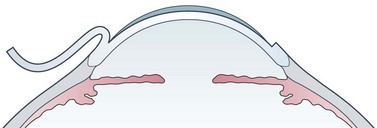CHAPTER 26 LASIK for myopia, hyperopia, and astigmatism
Introduction
LASIK was developed about 20 years ago by Dr Pallikaris in Greece and by Dr Buratto in Italy evolving from previous lamellar refractive surgery performed by Dr Barraquer and Dr Ruiz1,2. This chapter will go through the different steps of LASIK, thus giving information about its role in refractive surgery.
Epidemiologic considerations and terminology
LASIK is the most performed refractive procedure in the world, with several millions of cases, and is overtaking surface ablations in most countries. LASIK stands for ‘Laser assisted in situ keratomileusis’. The purpose of LASIK is to change the refraction of the eye through modifying the corneal curvature by excimer laser ablation of corneal tissue. Different from surface ablations, the laser energy is applied within the corneal stroma under a 100–180 µm corneal flap cut with a microkeratome or with a femtosecond laser. A hinge is left to allow flap reposition without suturing (Fig. 26.1). The maximum amount of dioptric correction is determined by balancing the pupil diameter, the ablation optical zone, the cut depth, and the corneal thickness. The upper limit is around −10 D for myopia, and around +5 D for hyperopia and for astigmatism in most eyes3.
Clinical features, diagnosis, and differential diagnosis
Hyperopic eyes are treated by curving the central corneal surface. Frequently they have nasal decentration of fixation, and the relevant data from the topographer must be loaded into the laser to avoid decentration. Depth problems are rare with hyperopia, but the increase in negative spherical aberration induced by the treatment suggests one should not treat hyperopia above 5–6 D. High order aberrations are increased more by hyperopic than by myopic ablations4.
Recently, several LASIK procedures have been proposed to treat presbyopia. The most popular approach consists of increasing the spherical aberration of the central cornea, around a 2 mm central zone, obtained by superimposing hyperopic and myopic ablations. A second approach aims at curving the inferior central cornea. Although good results have been published5, these procedures are still controversial.
Anatomical considerations
The hinge position can be nasal or superior, because lateral or inferior positions favor flap displacement. Ideally, the LASIK cut should lie on a single lamellar plane within the corneal stroma. In practice, it crosses different planes and usually it is thinner in the center, impairing the corneal biomechanics and producing minor refractive changes6. The average cut depth is around 160 µm. Thin flaps below 130 µm can help, leaving more room to ablation, but are less stable in the first postoperative period, often requiring bandage soft contact lenses for one day. The laser ablation is similar to that of photorefractive keratectomy, but with lower regression and inflammation. Flap adhesion in the immediate postoperative is assured mainly by the endothelial pump and is usually excellent.
Stay updated, free articles. Join our Telegram channel

Full access? Get Clinical Tree



